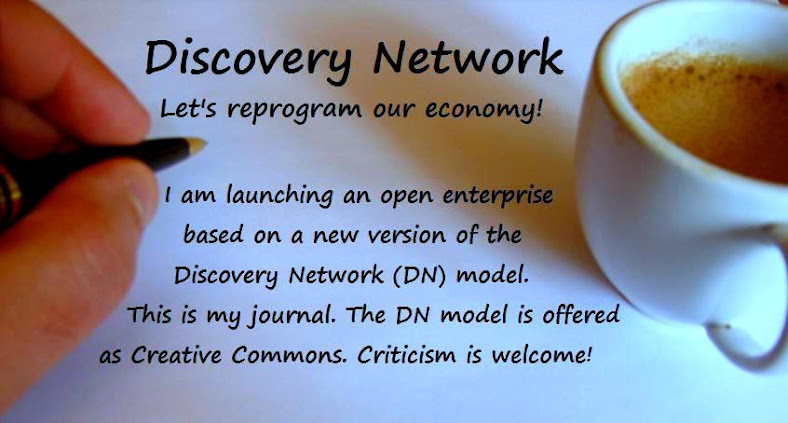The culture of openness is not settled yet. I think it is not enough to look at these well-known open projects (often representing early successes like Linux and Wikipedia) to predict where we're heading. I personally see most of these first open projects as hybrid structures. It is hard to collaborate in a overly competitive culture. It is hard to be entirely open in a culture of secrecy and predominantly elitist. It is hard decentralize in a culture of control. I always like to say that it almost takes two brains to operate in the old paradigm and in the new. Two different paradigms! (Don't take the term paradigm lightly) I see organizations morphing towards openness and decentralization, towards distributed analysis, planning, and decision making.
Decentralization doesn't mean flat, nor chaos. In my view, this term refers to governance and decision making, but NOT to value creation processes. I use hierarchy almost as the opposite of decentralization, referring to power relations.
In SENSORICA we are trying to eliminate power relations (= instituted power over others - power to fire someone, to tell someone what to do and when to do it, or like in the army), to build a value-based organization (value as in economical value, not as in moral value). Using my terminology, SENSORICA would not be a hierarchy in this case. This is why we call it a decentralized value network. SENSORICA would be decentralized but it doesn't mean that there is no structure! The structure comes from voluntary subordination. It comes dynamically, this is why we call SENSORICA an open, decentralized, and self-organizing value network. So there is organizing, there are very well defined roles, there is an established flow of processes, but there is no power structure. Power relations are not operational within this value network.
How tight can this organization be without power relations? I believe we can make it tight enough if all members have access to all the data, if members have access to analysis tools, if they can communicate and coordinate effectively, if some roles are well defined within the community, if other constraints like reputation and access to revenue are operational, if the incentives are clear, etc, etc.
I think that power relations are fading away. They play a crucial role in a world deprived of efficient means for peer-to-peer communication and coordination. Power brings accountability, which is what enables information to travel unaltered through a geographically spread and numerous society, from person to person. Information is crucial for large social systems to sustain themselves. Hierarchy is an attractor in these conditions. The only way to form large societies in this context is to structure them hierarchically, with a center of analysis, planning, and command, relying on accurate information that propagates through trust and accountability (power = if you lie to me I kill you).
The new technology changes everything! It enables peer-to-peer communication and coordination with no temporal and spatial barriers (at the scale of our planet). This constitutes a cataclysmic event in the history of humanity. Societies are now going through metamorphosis. Almost everywhere we look around we see decentralization going on. It's a slow and continuous process, we see a lot of intermediary structures, but the question is where is it going?
As systems decentralize the world is NOT becoming a mess. It just gradually transitions from one form of organization to a different one, in which power relations play a smaller role.
No boss doesn't mean that decisions are not taken! They are, in a distributed and even continuous (instead of discrete decisions) manner.
Openness is necessarily part of this transition, because in order for the system to sustain itself information needs to be accessible to all members.
More to come...



